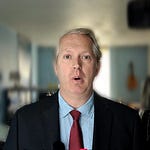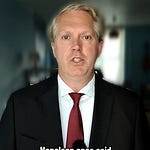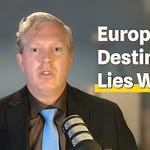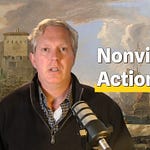The dream of renewable energy has popped. After Spain’s electric grid blacked out—within a week after achieving 100% renewable use—people were quick to blame Spain’s socialist government for its mismanagement. So then why are European nations, one month later, hurrying to switch back to nuclear?
Denmark has repealed its 1985 ban on nuclear energy, Belgium is reverting its nuclear phaseout, and Sweden has passed a law to invest in nuclear developments. Germany and France, the two powers that rule the European Union together, have decided to remove legal limitations on the use of nuclear within the EU.
Although Germany shut down its last three nuclear power plants in 2023, under pressure from the Green Lobby, just two years later, German leaders say up to six plants could be restarted. This wishy-washy style of energy management is affecting the 450 million EU citizens whose lives depend on electricity.
We all know why Europe is turning back to nuclear energy, and it’s because of Putin. And because the Anglo-American Empire sabotaged the Nord Stream pipelines, cutting off Europe’s most important industry—located in Western Germany—from cheap Russian gas.
The so-called sanctions on Russia have further crippled German industry, leading to an unprecedented wave of bankruptcies.
So why didn’t renewables work? Up until now, most investments in solar and wind have been heavily subsidized by governments in order to promote adoption. However, a 2022 report by Dutch research authority TNO predicted that, by 2030, unsubsidized wind farms might not become profitable.
Today, we can attest that, without government subsidies, the wind parks are indeed unprofitable. The cost of materials needed to build wind and solar farms has skyrocketed due to increased global demand.
For this reason, Dutch energy companies are refusing government contracts to build more wind turbines at sea. Germany’s first offshore wind farm is being dismantled as we speak after having been in use for just 15 years—at a net loss to society, of course.
Europeans weren’t generating free and green electricity from wind and solar. They were paying to subsidize green companies. But without free money, the green operators now refuse to deliver.
If wind and solar aren’t profitable in and of themselves, it makes sense to switch back to fossil and nuclear. But, since the cost of extraction of quality fossil fuels has also steadily increased, Europeans have no choice but to try nuclear.
A nuclear power plant is basically a giant water boiler heated by decaying uranium. The steam from the boiler is what generates electricity. I.e., it’s a steam engine. But uranium, too, isn’t cheap, and although Australia appears to have the largest stores of uranium buried in its soil, Russia and Canada also possess large amounts.
When, last year, I said that Germany should talk to its former colony of Namibia to discuss the sale of its uranium stores, everyone called me a racist. The colonizers have returned to take Africa’s resources. But here we are. I predict that Germany is going to welcome half a million Namibians into its borders soon, as part of a uranium deal, of course.
In the end, Europe has long become dependent on foreign sources of energy. The real problem, then, remains unsolved, namely that the European continent is vastly overpopulated, and that a time of reckoning will still come.










